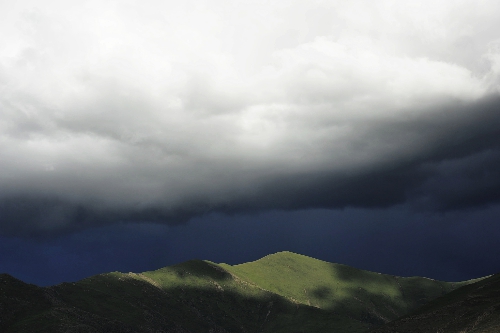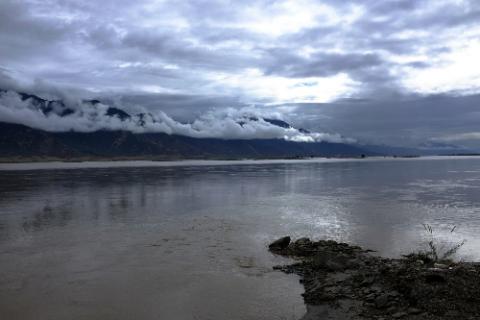
I woke up early in the morning, packed my luggage, loaded the car, and had breakfast within an hour. Before the city woke up, my daughter and I were already driving on the only highway in Tibet, heading to Shannan to explore the origin of Tibet. Tibet’s first palace, first monastery and first farmland. After leaving Lhasa, it was raining lightly. When we got off the expressway at Gonggar Airport and turned onto the road to Zedang Town in Shannan Prefecture, the rain finally stopped. From here, drive eastward along the Brahmaputra River.
The Yarlung Zangbo River originates from the Tibet Autonomous Region of China. In Tibetan, "Yarlu" and "Yarlung" mean the same thing, referring to coming from the sky, and Yarlung itself is also a place name, which is today's Shannan region of Tibet; " "Zangbu" means river. This river was eventually named "Yarlung Zangbo River", which is inseparable from the fact that the Xibuye tribe in the Yarlung area (the ancestors of Songtsen Gampo) finally unified the Qinghai-Tibet Plateau. This river flows through the main birthplace of Tibetan civilization and is regarded by Tibetans as the "cradle" and "mother river". It has a total length of 2,840 kilometers (including tributaries with a total length of 3,848 kilometers) and a drainage area of approximately 935,000 square kilometers, of which 2,057 kilometers are in China and the drainage area is 246,000 square kilometers. It is the sixth largest river in China in terms of length (after the Yangtze River, Yellow River, Heilongjiang, Songhua River and Pearl River), the largest river in Tibet, and the second largest river in India and Bangladesh in terms of water volume (after the Yangtze River, Yellow River, Heilongjiang, Songhua River and Pearl River). Ganges). Its upper reaches are the river with the highest altitude in the world and the river with the steepest slope in China.
The source of the Brahmaputra River is the Jerma Yangzong Glacier (rje ma g.yang vdzoms) at the northern foot of the Himalayas in Tibet, China. The upper reaches is called the Maquan River (rta mchog kha vbab). It traverses southern Tibet from west to east; after flowing through Milin, it ends north of Medog It cuts through the Himalayas, bypasses the Namjagbarwa Peak at the easternmost end of the Himalayas, and turns southward, forming the world's largest canyon - the Brahmaputra Grand Canyon; and then exits China's Line of Actual Control (i.e. McMahon) at Pasika Flood Line), after India invaded China's southern Tibet region, it entered Assam, India, and was renamed the Brahmaputra River; after entering Bangladesh, it was called the Jamuna River, and it converged with the Ganges River in Bangladesh. Finally it flows into the Bay of Bengal, forming the largest delta in the world.
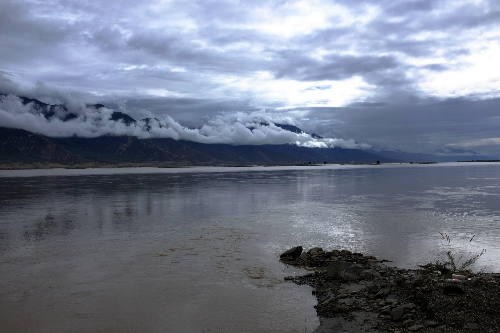
The original plan was to go to Samye Town on the other side of the Yarlung Zangbo River at the crossing of Zhanang County, visit the Samye Monastery, the first temple in Tibet, and then stop by Zedang to see Yumbula Kang. We would stay in Zedang at night and pass by Yamdrok Yumco tomorrow morning. Go to Gyantse. Only when we arrived in Zhanang County did we know that this ferry had been suspended for a long time. We had to go to Zedang Town to cross the Brahmaputra River Bridge, and then go to Samye Town via the newly built highway. This change was 120 kilometers longer than the originally expected trip. It was already noon when we arrived in Zedang Town. After finding a place to stay for the day, we had to go to Yongbulakang first.
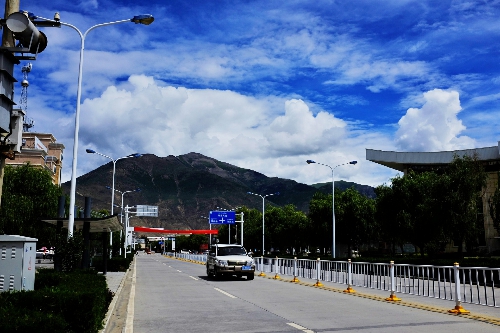
Yongbulakang is only about 10 kilometers away from Zedang. On the way, you will pass Changzhu Temple, a Gelugpa monastery of Tibetan Buddhism. Changzhu Temple was built during the Songtsen Gampo period. It is said that Princess Wencheng once stopped to practice in this temple. There is a copper bell hanging in the temple. The treasure of the temple is a thangka made entirely of pearls, which is a rare treasure in the world. This "Avalokitesvara Bodhisattva Resting Picture" (Jianqi Mu'e'e pine statue), which is drawn with pearls strung together in lines, was created during the Pamo Drukpa dynasty in Tibet at the end of the Yuan Dynasty and the beginning of the Ming Dynasty. It was created by the then Queen of King Naedong. Made with investment. The entire thangka is 2 meters long and 1.2 meters wide. It is inlaid with a total of 29,026 pearls, one diamond, two rubies, one sapphire, 0.55 taels of purple sapphire, 0.91 taels of turquoise (185 in total), and 15.5 taels of gold. grams, 4.1 taels of coral (1997 pieces in total). But I have never understood why the main Buddha in the Gelug monastery is Padmasambhava, the founder of the Nyingma sect?
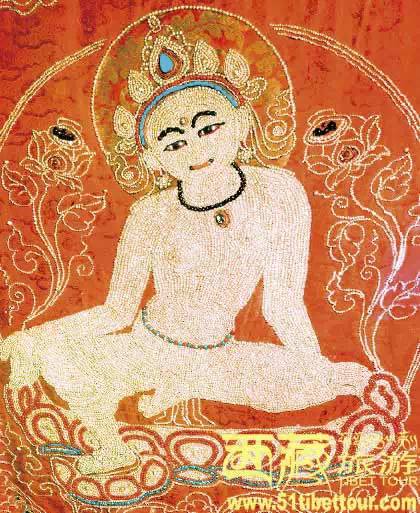
Tibetan Buddhism was introduced from Han and India when Songtsen Gampo established the Tubo Dynasty. Songtsen Gampo converted to Buddhism under the influence of Princess Wencheng and Princess Chizun. Later, Zanpo Trisong Detsen played a great role in promoting the development of Tibetan Buddhism. He welcomed the Indian monk Padmasambhava to Tibet and founded the Nyingma sect of Tibetan Buddhism. He also built the first Tibetan Buddhist temple, Samye Monastery. This period, which lasted until Langdama destroyed the Buddha, is called the Qianhong period.
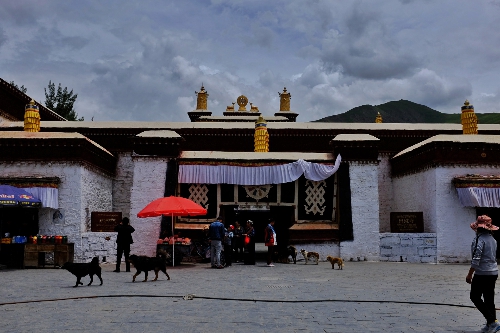
Golden Dome of Changzhu Temple
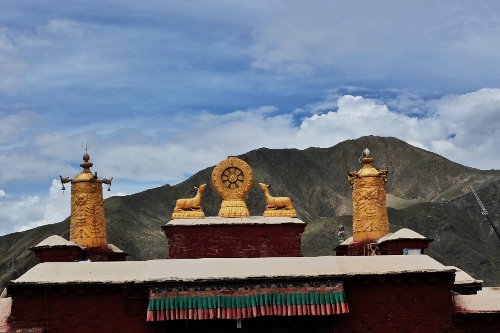
As soon as I entered the temple, I saw a monk touching the heads of the herdsmen and distributing elixirs.
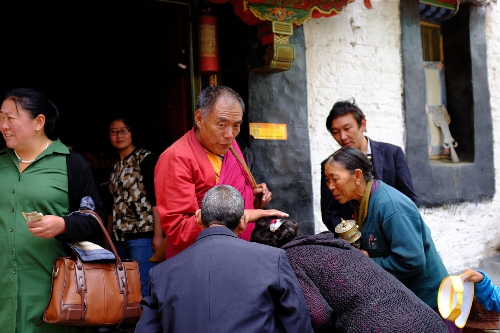
My daughter tasted a few pills and said they tasted sour. The herdsmen nearby said they were good things.
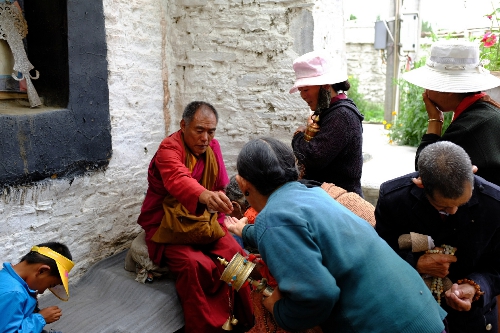
Follow the rules of Tibetan Buddhism in the temple and visit it in a clockwise direction. What my daughter likes to do most is to offer the dime exchanged at the door to the Buddha who looks the same to her, and keeps saying it He chanted "Om (ōng) ma (mā) nī (bēi) mēi (hōng), bless me with high scores in the exam."
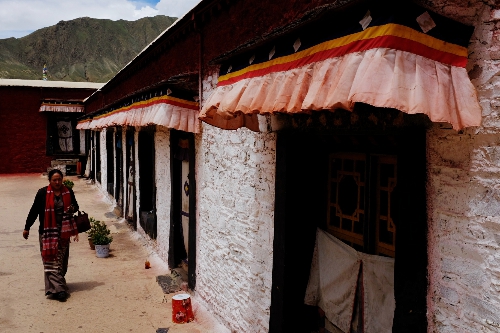
As usual, it is not allowed to take pictures in the Buddhist hall of the temple. The main reason is that you cannot take pictures of the Buddha statues, which is disrespectful to the Buddha.
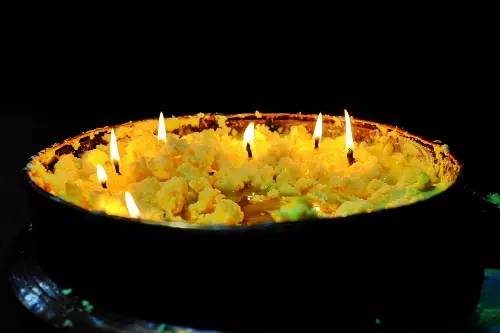
Ghee is offered as an offering by the herdsmen who come to worship. Each of them will bring a hot water bottle and pour the butter brought from home into each butter lamp in the Buddhist temple in turn, so that the lights will not go out all year round.
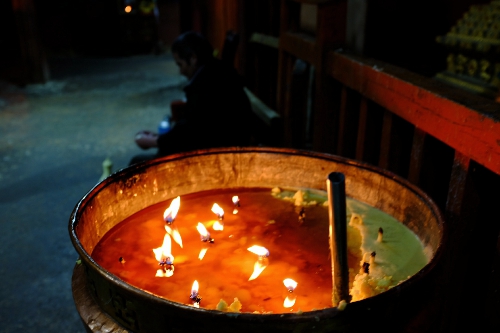
The herdsmen who perform prayers will bring some containers to take home the "sacred water" in the temple.
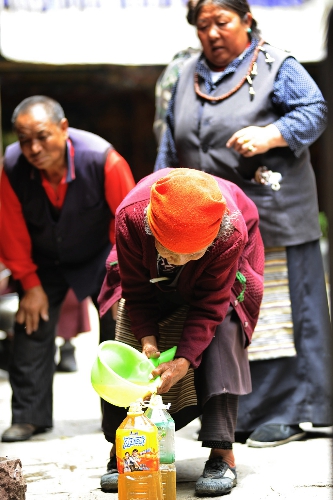
I washed my hair with "sacred water" in the temple.
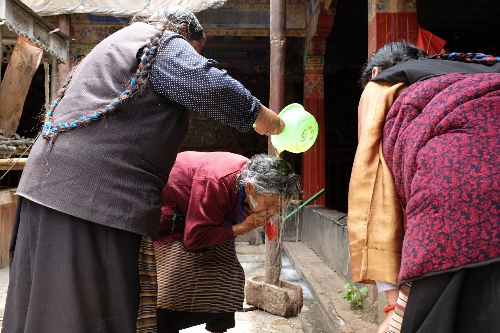
After a herdsman washed her hair with "sacred water", her heartfelt happiness shone on her face marked by time. It was a very contagious emotion. My finger on the camera shutter could not stop it. Let go and take this rare set of pictures.
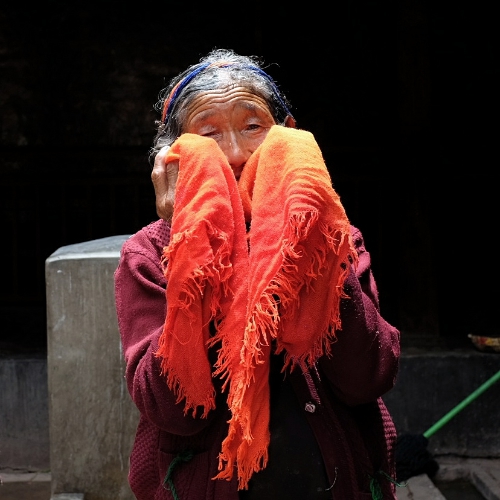
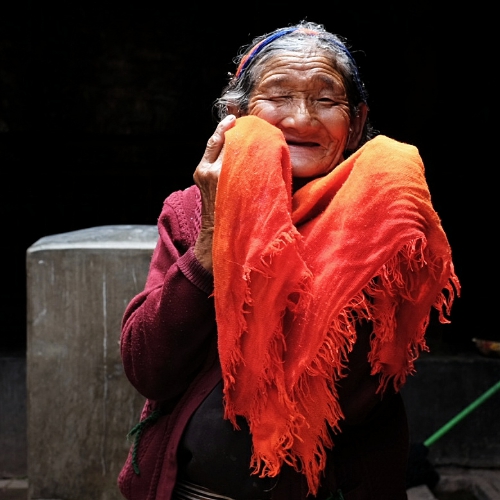
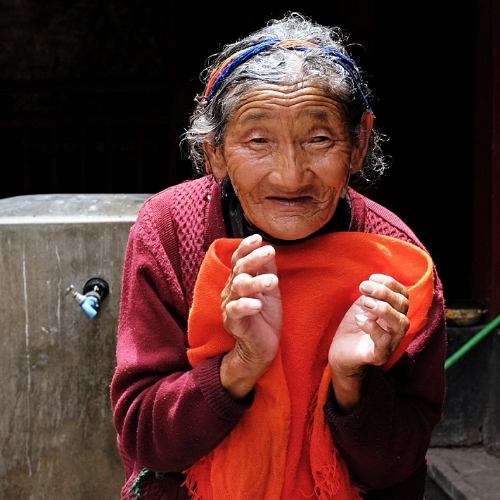
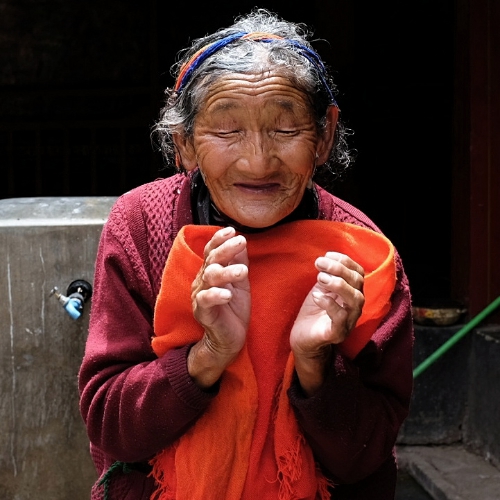
In the last picture, where I closed my eyes and enjoyed the protection of the Buddha, I felt that the color was superfluous. This was the most satisfying picture of this trip to Tibet.
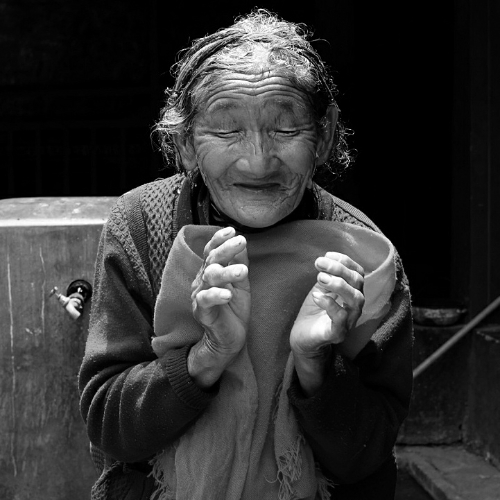
The herdsman resting next to me was full of confusion about me. When I played back the photos to her on the camera screen, she had a child-like smile on her face. Maybe I will never truly understand their happiness.
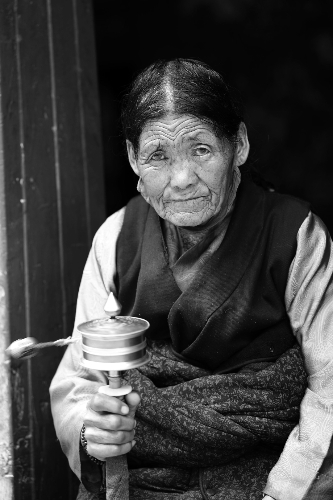
Perhaps these Tibetan dogs sleeping so comfortably in the sun can better understand such simple happiness.
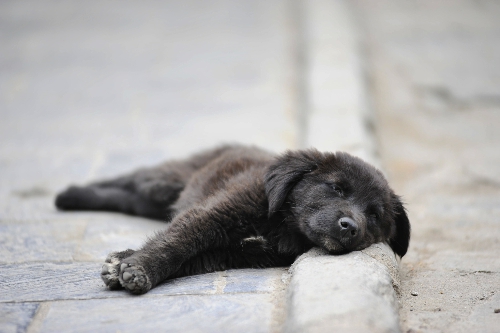
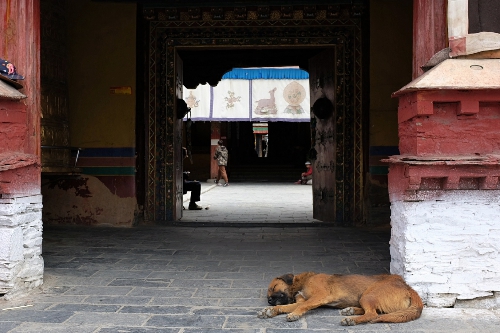
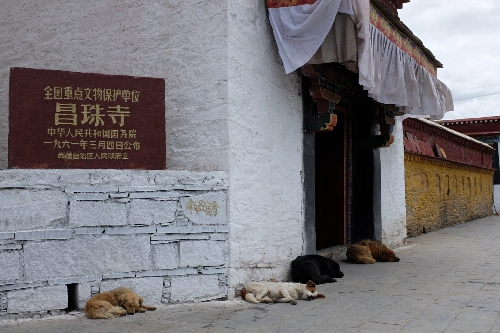
Leaving Changzhu Temple, the highland barley in the fields has turned yellow. Shannan is the granary of Tibet.
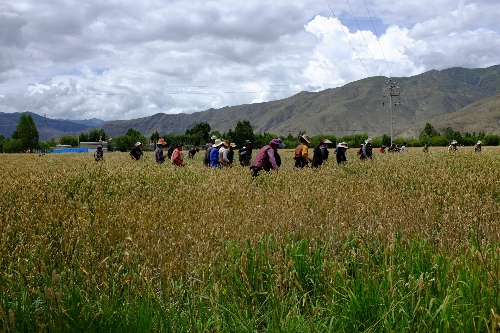
Yumbulakang is the first palace in Tibet. According to legend, it was built in the second century BC. Nie Tri Zampu, who became the first Tibetan king of Tibet in a daze, not only became the "King of England with a neck as a throne", He also got the three-story "Hongliu Xiangsha Palace" specially built for him. This story actually sounds quite familiar. To put it bluntly it’s like hearing a story about someone who suddenly won a big prize and immediately ran to a “high-income” family with a house and a car. The walls on the second floor of the palace This legendary story is also painted on the mural, which is admired by future generations. As a result, this palace also became the royal palace of Tubo Zampu in the past dynasties until Songtsen Gampo, the 33rd generation Zampu, unified the plateau and moved the royal capital to Lhasa. However, even wise warriors such as Songtsen Gampo did not dare to forget Yarlung, the fundamental land of Tibet, and would come back to live from time to time. It is said that Princess Wencheng spent her first summer in Yongbulakang after marrying to Tibet. spent. There is another miraculous thing about Yongbulakang. Since the first generation of Nie Tri Zampu, all generations of Zampu have adopted Bon religion as the national religion, until the 28th generation of Zangpu Tuotuori Nianzan period. Legend has it that one day a "divine object" dropped from the sky on the top of Yumbulakang. There were scriptures, magical instruments and spells inside. However, no one at that time knew the wonder of these things. They only knew that they were good things, so they enshrined them. When he got up, he also named him "Ningbo Sangwa", which means secret room. It was not until many years later that later generations recognized precious scriptures such as the "Sutra on the Names of Buddhas and Bodhisattvas" in the secret room, and realized that Buddhism had actually entered Tibet long before the time of Songtsen Gampo. The Bon religion was so powerful that they had no choice but to "airdrop" first and then "lay in ambush" to wait for the future. The palace subsequently became a Buddhist holy place, and thus became a Buddhist temple, a place of practice for many eminent monks, and a place where many "termas" were discovered and buried.
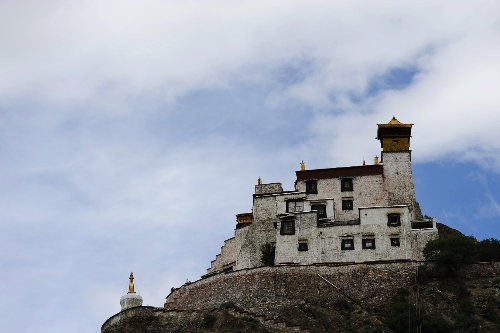
Riding a horse up to Yongbulakang, looking back at the grain fields at the foot of the mountain.
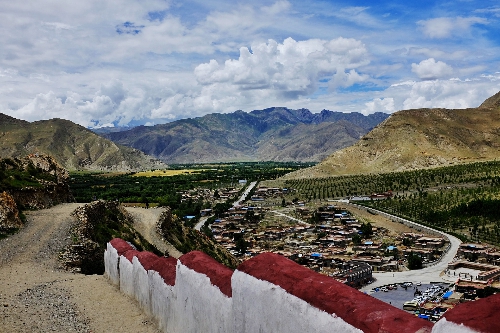
Perhaps Songtsen Gampo was standing here looking at the harvest of highland barley, looking forward to the early completion of the Potala Palace in Lhasa and marrying Princess Wencheng of the Tang Dynasty.
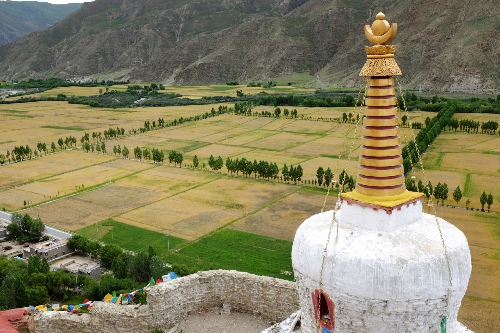
While playing with the Mani stones on the palace wall, her daughter said that Songtsen Gampo's building of the Potala Palace for Princess Wencheng was just an excuse, and his real purpose was to rule Tibet.
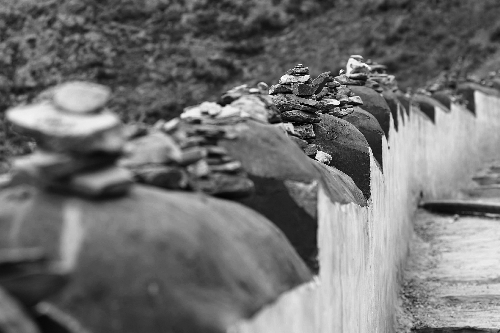
Beside the road at the foot of Yumbulakang, there is a stone tablet erected in a small field. This is the first farmland in Tibet.
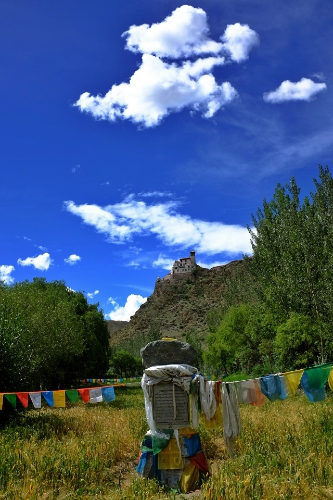
My daughter’s interest in goats goes far beyond the farmland.
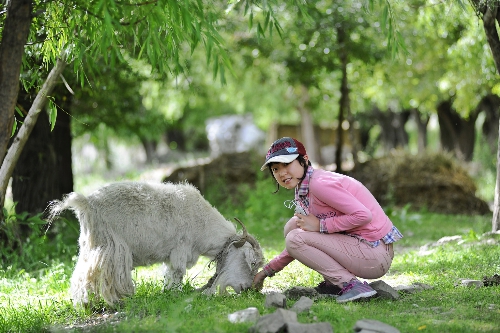
It was still early when we came down from Yumbulakang. We continued along the road and passed by a village. We saw people dressed in festive costumes gathering in the small square of the village committee. It turned out that today happened to be the "Fruit Festival" of this village.
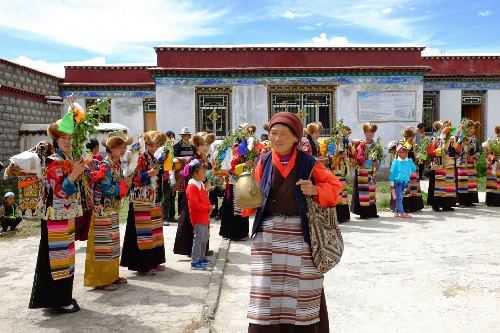
"Wangguo" is the Tibetan transliteration, which means "circling around the land". The Tibetan word "Wang" refers to farming days, and "Guo" means turning in circles. The "Wangguo" festival can be translated as "the day of turning in circles on the edge of the fields." Because on the morning of the first day of the festival, when the sunshine fills the golden wheat fields, farmers will hold wheat ears and parade around the farmland. At the front is an honor guard composed of lamas and old farmers, holding high Buddha statues, carrying scriptures, and blowing Buddha trumpets. , thank God for bringing people a good year with good weather and good weather. For the hard-working farmers, seeing the crops that are about to be harvested and breathing in the fragrance from the wheat fields feel joyful and intoxicating, and they sing ancient harvest songs.
The Wangguo Festival has a history of more than 1,500 years. It is a traditional festival for Tibetan farmers to celebrate the harvest. It is popular in Lhasa, Shigatse, Shannan and other places in the Tibet Autonomous Region. It takes place in the seventh and eighth months of the Tibetan calendar every year. The specific date changes with the changes in the farming seasons in various places. It is usually held after the highland barley is ripe and two or three days before the sickle is harvested, and lasts one to three days. Therefore, the schedule of the Wangguo Festival is based on the township, and is decided collectively by the villagers based on the maturity of local crops.
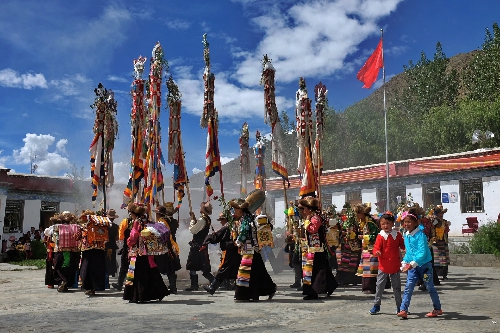
Lama presiding over the Wangguo Festival ceremony
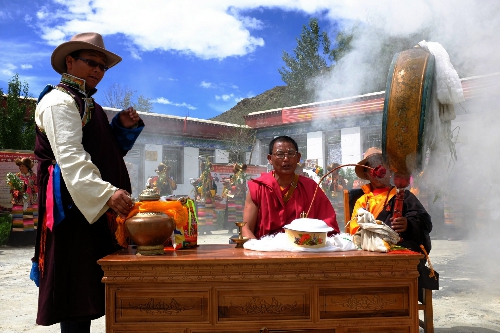
The joy of harvest is written on the faces of the villagers.
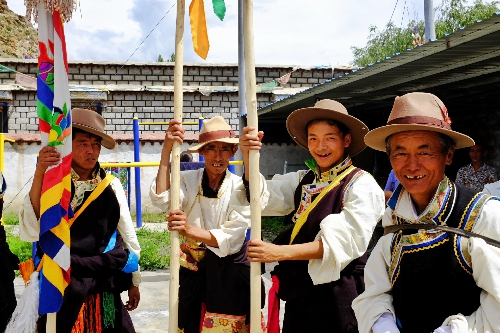
The shy villager covered his face with the object in his hand.
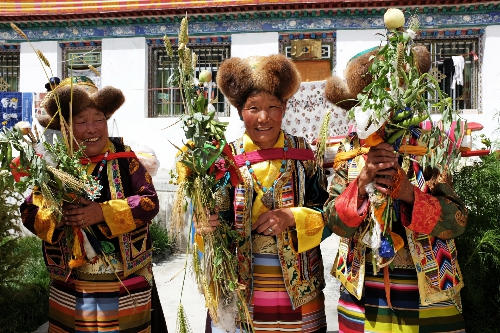
The drummer looked at me sitting on the wall taking pictures.
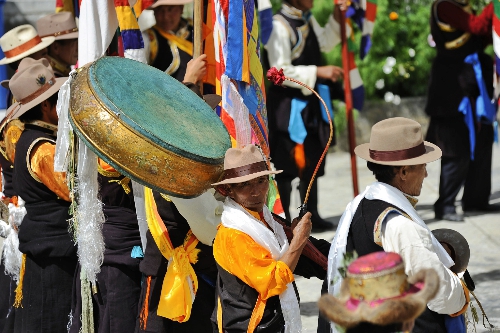
A group of tourists took pictures of the two beauties with their mobile phones.
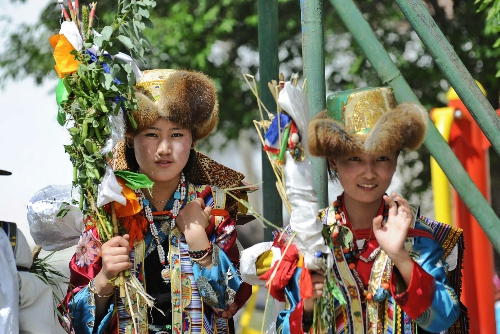
After watching the Wangguo Festival ceremony, we drove back to Zedang. The sun is setting in the west, and the farmland under the warm light has a color like an oil painting.
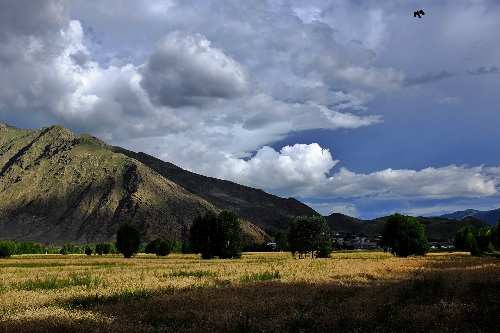
Only Tibet has such a magnificent sky.
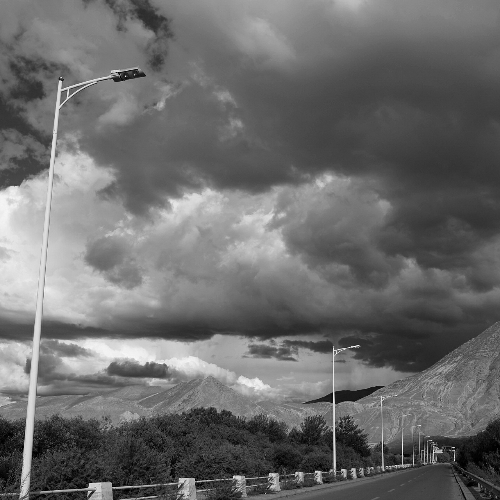
There are several professional wheat harvesters from the mainland on the roadside, which reminds me of the professional wheat harvesters in "A Bite of China 2".
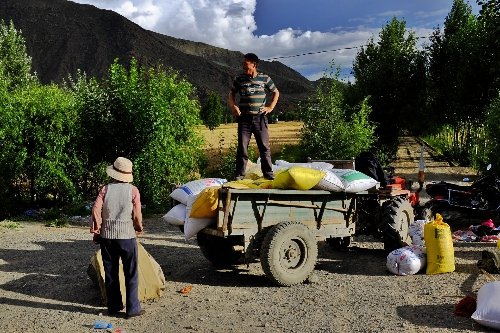
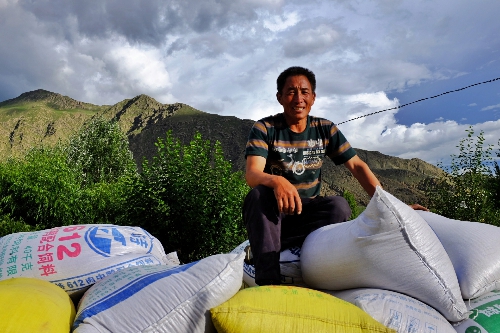
There is only a ray of sunshine left on the mountaintop shrouded in dark clouds, and the rain is coming. . . . . .
